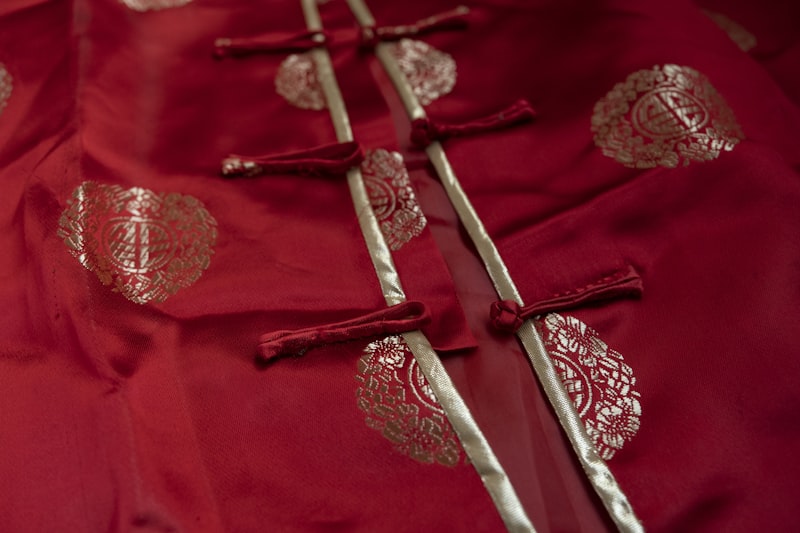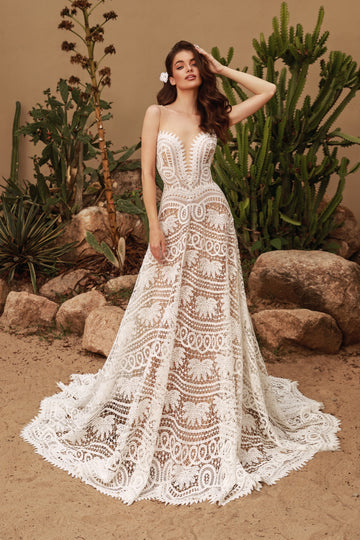The Significance of Embroidery in Bridal Fashion
The Significance of Embroidery in Bridal Fashion
When it comes to bridal fashion, details matter immensely, and one of the most captivating elements that define the charm of wedding attire is embroidery. This intricate art form has transcended cultures and generations, playing a pivotal role in enhancing the beauty and elegance of bridal wear. This article delves into the significance of embroidery in bridal fashion, exploring its cultural implications, technical aspects, and emerging trends, accompanied by engaging visuals and a table summarizing key points.
The Cultural Significance of Embroidery
Embroidery has been an integral part of wedding ceremonies worldwide, often symbolizing love, purity, and tradition. In various cultures, the patterns and colors used in embroidery carry specific meanings. For instance, in Indian bridal fashion, the intricately embroidered lehengas and saris often feature motifs that signify prosperity and fertility.

Similarly, in Western cultures, lace and embroidery have adorned gowns for centuries, with each stitch representing the bride's family heritage. The choice of embroidery reflects not just personal taste but familial traditions, honoring the past while embracing the future.
Types of Embroidery Used in Bridal Fashion
Bridal embroidery comes in various forms, each with its unique characteristics and styles:
| Type of Embroidery | Characteristics |
| 1. Hand Embroidery | Personalized details, unique designs, time-consuming process. |
| 2. Machine Embroidery | Uniform patterns, cost-effective, faster production. |
| 3. Beadwork | Adds texture and sparkle, often combined with other embroidery techniques. |
| 4. Appliqué | Layering fabric pieces, creating depth and visual interest. |
| 5. 3D Embroidery | Textured effects, adds modernity and uniqueness. |
Each of these embroidery types contributes uniquely to a bridal ensemble, allowing for endless creativity and personalization.
The Technical Aspects of Embroidery
Understanding the technicalities behind bridal embroidery is essential for both designers and brides. The choice of thread, fabric, and technique can significantly affect the outcome. High-quality fabrics such as silk, tulle, and chiffon are often used for bridal wear, as they provide a perfect canvas for delicate embroidery.
Moreover, the type of thread utilized can also vary. Silk threads offer a luster that is unmatched, while cotton threads can provide durability and a matte finish. The strategic use of color can enhance the design, drawing attention to specific focal points on the gown.
Emerging Trends in Embroidery for Brides
As fashion continues to evolve, so does the art of embroidery. Here are a few emerging trends:
- Eco-Friendly Embroidery: Many designers are now exploring sustainable practices, using organic fabrics and non-toxic dyes to create beautiful embroidered pieces.
- Bold Colors and Patterns: Gone are the days of solely white and ivory. Brides are now opting for bold colors and unconventional patterns, making a statement on their special day.
- Customized Embroidery: Personalization has become key, with many brides choosing to have their names, wedding dates, or meaningful quotes embroidered into their gowns.
These trends highlight the continual evolution of bridal fashion and the enduring importance of embroidery.
The Emotional Connection of Embroidery
Embroidery in bridal fashion extends beyond aesthetics; it carries emotional weight. For many brides, the intricate designs are reminiscent of their family history and culture, providing a sense of belonging and continuity as they embark on a new chapter in life. A bride wears not just a dress but a tapestry of stories woven together through generations.
Choosing a gown with intricate embroidery can evoke sentiments of nostalgia and joy, making the wedding day even more memorable. Whether it’s a traditional design or a modern twist, embroidered pieces have the power to channel emotions on such an important occasion.
How to Incorporate Embroidery into Bridal Attire
Brides looking to incorporate embroidery into their attire should consider several factors:
- Dress Style: The style of the wedding dress can influence how embroidery is applied. A ball gown may allow for grander embroidery, while a sheath dress may benefit from more delicate accents.
- Theme and Venue: Consider the wedding theme and venue when selecting embroidery styles. A rustic outdoor wedding might call for floral designs, whereas a formal indoor event could suit intricate lace patterns.
- Personal Taste: The bride’s personality should shine through the choice of embroidery. Opt for designs that resonate with their individuality, ensuring they feel confident and beautiful.
Consulting with a professional designer can also provide valuable insights and options tailored to the bride’s vision.
Conclusion: The Lasting Impact of Bridal Embroidery
In conclusion, the significance of embroidery in bridal fashion is multifaceted, embodying cultural heritage, artistic expression, and emotional connectivity. As trends evolve, one thing remains constant: embroidery adds a timeless elegance that is unmatched. For brides planning their wedding attire, understanding the importance of embroidery can significantly enhance their choices, making for a more personalized and meaningful experience.
Whether you opt for traditional motifs or modern designs, ensure that your choice reflects your journey and the love you are celebrating. Remember, an embroidered gown is not just a dress; it is a symbol of love woven into every thread.
When choosing your bridal outfit, be sure to consider the design, technique, and emotional significance of embroidery in your personal story. Happy planning!
